“Youth is wasted on the young” is a saying that issues from the mouths of the old who have made mistakes and wish they could do it over. “Body insurance” is an injunction to all those who lift weights to do so with thoughts of their future health and well-being. It may be difficult when we’re young to think about the ramifications of our youthful habits. For one thing, the frontal lobe of our brains—the seat of judgment—is not fully developed until we’re 25. Still, it’s important to delineate some principles of weight training and nutrition that profoundly expand the quality of human life—preserving youthful vitality into old age.
It’s not only competitive bodybuilders who do foolish things in their youth. We’re all prone to think we’re immortal and don’t have to be careful about what we eat or drink or how we drive or how hard we push ourselves in pursuing a sport. Thoughtless pursuit of any goal will always lead to overtraining, injuries and hindrances to progress. So let’s look at some important elements of a lifestyle that can slow the aging process and protect youthful vigor long past the 20s and 30s.
According to the American Academy of Family Physicians, the maximum benefits of exercise are achieved when it consists of 30 to 60 minutes, four to six days per week. According to the Harvard School of Public Health, “Next to not smoking, getting regular physical activity is arguably the best thing you can do for your health. It lowers the risk of heart disease, diabetes, stroke, high blood pressure, osteoporosis and certain cancers.” Sarcopenia, or the loss of muscle as we age, results in a loss of up to 40 percent unless counteracted by weight-bearing exercise. Sacropenia is not a hidden result of old age, like hardening of the arteries. It’s often easy to recognize someone is old even from a distance just by the obvious loss of deltoid and pectoral muscle in the upper body, plus atrophy in the gluteus maximus and quadriceps in the lower body.
Once a person begins an exercise program, the challenge is to make it part of his or her lifestyle. Fads in exercise and nutrition irritate me, because there’s no quick fix—you must make a permanent lifestyle change.
One reason diets and exercise fads don’t work is that humans get bored rather easily. So how do you maintain motivation?
Periodization is one answer—that is, changing exercises, sets, reps, even days from time to time. Our bodies get used to any routine and then quit responding. Regularly changing the routine disrupts that cycle.
Another challenge to lifestyle fitness is overtraining. Symptoms include loss of motivation, fatigue, insomnia, decrease in sex drive, irritability, depression and a host of other undesirable outcomes. If those symptoms begin to characterize your life, it’s time to examine what could be causing them: It could be insufficient calories, lifting heavy weights too often, doing too many sets and repetitions or just not using periodization to avoid overtraining.
If anything can interrupt a person’s dedication to lifestyle fitness, it’s injuries. To avoid injury, you must perform each exercise properly; a certified personal trainer could help here. Putting your skeleton in awkward and dangerous or biomechanically unsound skill patterns is asking for injury. For example, the squat is one of the most productive exercises you can do, but if you do it improperly, it can damage your knees. When squatting, be sure to keep your knees pointing and bending in the same direction as your toes to avoid twisting your knees. Any severe inward rotation of the knees can eventually result in injury. Find a good book on exercise kinesiology to be sure you are following proper exercise form.
In addition, keep your ego in check by avoiding singles, or maximum one-rep attempts. Unless you’re shooting to be a competitive powerlifter, singles are just too dangerous and unnecessary in normal training.
Motivation and progress are also greatly enhanced by setting goals. Without a goal, most people will have difficulty training consistently, let alone actually getting fit. Set both long-term and short-term goals. For instance, many men would like to add an inch or two to their arm girth. The smartest way to do that is to work on short-term goals such as shooting for 1/16 inch first.
When I’m trying to gain in a body-part, I measure the part before and after I train it, just to see the difference between the cold and pumped measurements. Then I begin to aim for a greater pump every time I work it. If an arm measures 16 pumped now, pump it to 16 1/16 to 16 1/4 during the next workout. Whatever you achieve, let that be the least you let it pump to the next time. Soon it will be larger in the cold stage and pump even larger. If a couple of weeks go by and the measurement hasn’t changed an iota, determine to pump that sucker up as long as it takes to move that tape. Determination + faith + persistence = success. You can do it.
(A caveat: Sometimes with goal setting, you have to make a choice. It’s very difficult to cut up and grow muscle at the same time. It is very difficult to gain pure strength—be able to life twice bodyweight—and concentrate on building big biceps or a six-pack set of abs. You have to set your sights on one goal and stick with it.)
As you increase the intensity of your workouts, warming up should be part of your regimen, and I don’t mean stretching: Do a few sets with significantly lower weight than your six-rep maximum. Doing a couple of sets of 10 to 12 repetitions with a weight you could actually do more like 15 to 20 repetitions with lubricates the joints—something especially important for the over-40 crowd—and prepares muscles to exert maximum effort.
Finally, let me alert you to a newly discovered bonus from exercise: Proper, consistent training will protect your brain from dementia. A number of studies over the past decade have demonstrated that exercise can inhibit the impairment of the dentate gyrus, the site in the hippocampus that is identified as the site of impairment in normal memory loss. Exercise stimulates increases in cerebral blood volume, which should result in extension of normal memory. In fact, correlation between exercise and better performance on memory tests has been demonstrated in numerous studies, such as those by Arthur Kramer at the University of Illinois and those at Israel’s Bar-Ilan University and researchers from the Karolinska Institute in Stockholm.
Resistance training creates stress on the body that it responds to by overcompensation—the anabolic process. Yet if it’s not properly fueled, training is a waste of time. I always believed that it was not only the quantity of calories that counted but also the quality. In other words, our bodies not only do not metabolize protein, fats and carbohydrates in the same manner, but even complex carbohydrates are metabolized differently than simple carbohydrates.
Processed foods with an overabundance of sugar, flour and salt are often referred to as empty calories because they provide so little nutritional value, especially the vitamins and minerals necessary to turn food into lean tissue. Concentrate on nutrient-dense foods like baked, broiled or grilled chicken, fish and beef; steamed vegetables; and fresh fruit.
Also, eat six small meals if possible rather than two or three big ones. Protein drinks and/or low-carb protein bars along with vitamin-and-mineral supplements can count as one or two of those small meals. You’ll lose inches in the waist and butt and gain in the shoulders and arms. You will, therefore, look slimmer and more shapely whether you lose or gain bodyweight.
The importance of following a nutritious diet cannot be stressed enough. Gluttony is rampant in America, with more than 60 percent of Americans being overweight or obese. That has resulted in a rising incidence of cancer, diabetes, high blood pressure and heart disease. If that isn’t bad enough, the March 26, 2008, edition of the journal Neurology reported the results of a study involving 6,500 people: Those who were overweight and had a large belly were 2.3 times as likely to develop dementia as those with normal weight and belly size.
So the combination of a healthful and nutritious diet with a solid exercise routine can’t be beat for ensuring that your healthy body and mind will last a lifetime.
3) Proper Rest
Training and eating right are the keys to success, yet some people still fail to make the gains they expect. Often it’s because of lack of sleep. You can train and eat right, but if you’re not getting seven to nine hours of sleep each night, forget it. While you’re sleeping, growth hormone is released so that your body can repair itself and so that real growth of fat-burning muscle can occur. [For more on sleep, see page 88.]
4) Sparing Energy for Workouts
Don’t expect spectacular muscle gains if you go out dancing all night or play basketball or some other sport. When you want maximum gains in lean body mass, limit your activity to tossing the steel around. Any energy expended on any activity other than pumping iron, including aerobics, is energy your body won’t have to grow muscle. If the goal is to lose fat, then aerobic exercise is probably a must for females, whose metabolisms don’t remain elevated after exercise as long as males’ do, but if you have eliminated junk foods, you should see great gains in health and fitness.
5) Learn to Manage Stress
If you’re in a lousy relationship that upsets you or you’re worried all the time about finances, health or some work-related or family problems, you can’t make maximum gains. You must be able to manage your stress levels. The body can use up as much as 90 grams of protein during a stressful day. Just think of the maintenance, repair and growth of muscle your body could have accomplished with those 90 grams.
Follow these simple lifestyle protocols, and you’ll not only make progress but maintain a fit and active lifestyle for life.
Editor’s note: Richard Baldwin, Ph.D., 58, is a former Mr. USA and Mr. America class winner. IM













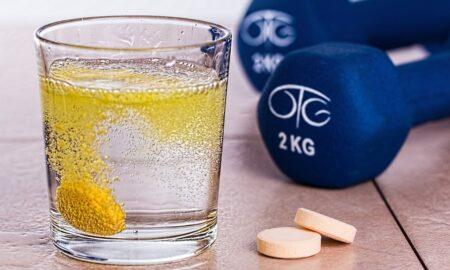

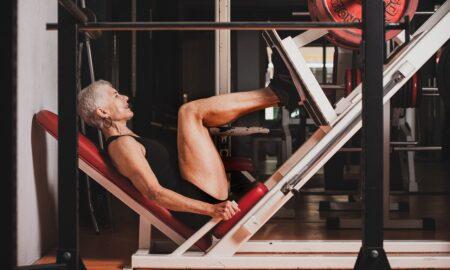
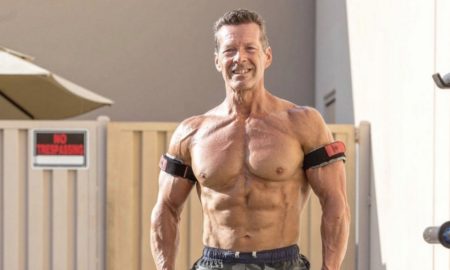
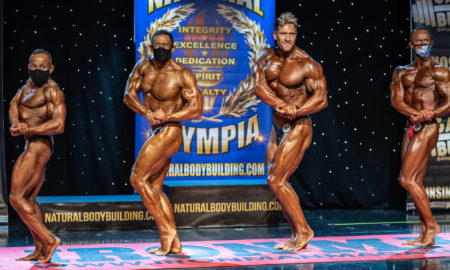
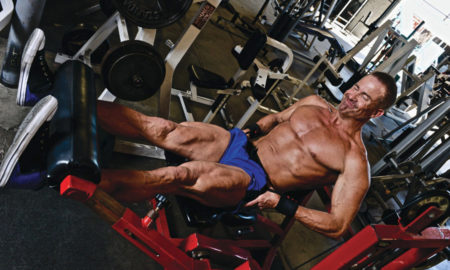
You must be logged in to post a comment Login